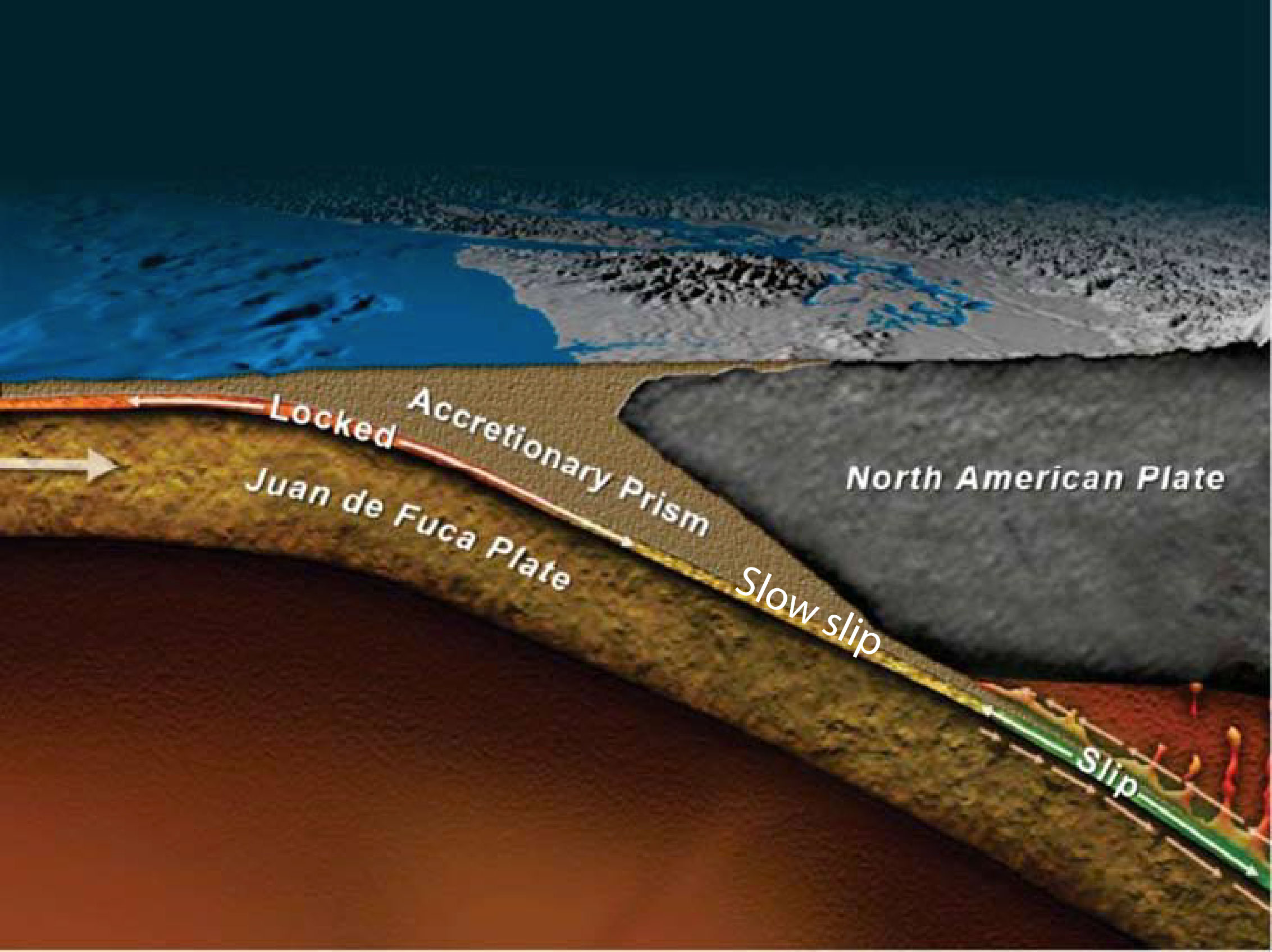By David Jacobson, Temblor
Check your seismic hazard rank

Last night, at 8:59 p.m. local time, a M=4.2 earthquake shook northwest Washington, approximately 40 km west of the city of Seattle. The earthquake was widely felt, including in Seattle, and at 9 a.m. this morning, over 2,700 people had reported feeling the quake on the USGS website. This earthquake occurred west of the Seattle Fault near the Hood Canal Fault Zone. While the quake itself was not large and did not cause any damage, its location is why it should be highlighted. This earthquake occurred within a region currently undergoing a slow slip event along the Cascadia Subduction Zone.

Since at least the 1990s, slow slip events have occurred along the Cascadia Subduction Zone at an interval of approximately 14 months. While slow slip events happen on other subduction zones around the world, Cascadia slow slip is the most well-documented and periodic.

What is important to point out is that slow slip events are not like regular earthquakes. When most people think of earthquakes, they think of shaking for seconds to minutes. However, slow slip events are characterized by tremor, which can last for days to weeks. Tremor is defined as high frequency vibration that does not have the same initial onset seen in regular earthquakes. Tremor is often accompanied by extremely slow surface deformation, suggesting slip occurs simultaneously.
While this slip along the Cascadia Subduction Zone is termed as “rapid,” it is still much slower than what is experienced during regular earthquakes. However, it is more rapid than what normally occurs along Cascadia. In most places along the subduction zone, slip is approximately 4cm/yr. However, locking periodically occurs, and is followed by these slow slip events.

Slow slip events are also unique because of the zone in which they take place. From the earth’s surface to a depth of 35 km, the Cascadia Subduction Zone generally follows a pattern of locking for decades to millennia. These periods are separated by extremely rapid slip in catastrophic earthquakes that can exceed magnitude 9. However, slow slip events take place from 35-55 km depth, below which the plate motion is believed to be “smooth and constant.” Therefore slow slip appears to take place in a bit of a transition zone where there is both locking and steady slip for week-long periods. Because of this, the stress released in slow slip events is substantially lower than in regular earthquakes. Today’s M=4.2 quake occurred at a depth of 15 km, meaning it was a mid-crustal event.

The slow slip event currently taking place began around February 16, according to Steve Malone, the former director at the Pacific Northwest Seismic Network. He based this on the fact that on by February 21, there has been five consecutive days where significant tremor was recorded for 5-17 hours. Additionally, the last event was in December 2015.Therefore, you could say that one was due.
One question that often arises with slow slip events is whether they can be used to interpret the threat of large subduction zone earthquakes. While it is possible, at this stage scientists are unsure. Nonetheless, significant research is focusing on this phenomenon to see if slow slip events are a key to unlocking where large earthquakes could occur.
References
Pacific Northwest Seismic Network (PNSN)
John E. Vidale and Heidi Houston, Slow slip: A new kind of earthquake, January 2012, Physics Today
- Earthquake science illuminates landslide behavior - June 13, 2025
- Destruction and Transformation: Lessons learned from the 2015 Gorkha, Nepal, earthquake - April 25, 2025
- Knock, knock, knocking on your door – the Julian earthquake in southern California issues reminder to be prepared - April 24, 2025
